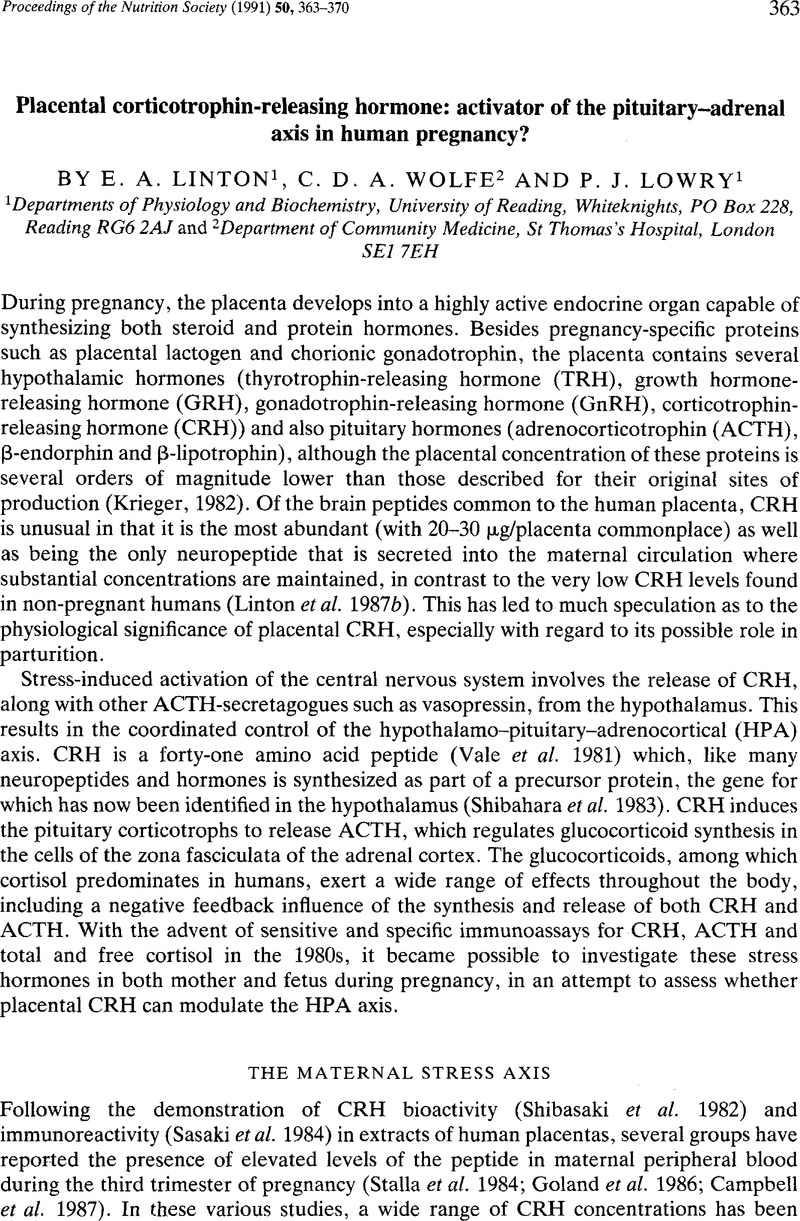Crossref Citations
This article has been cited by the following publications. This list is generated based on data provided by Crossref.
Arck, Petra C.
Merali, Fatima S.
Manuel, Justin
Chaouat, Gerard
and
Clark, David A.
1995.
Stress‐Triggered Abortion: Inhibition of Protective Suppression and Promotion of Tumor Necrosis Factor‐α (TNF‐α) Release as a Mechanism Triggering Resorptions in Mice.
American Journal of Reproductive Immunology,
Vol. 33,
Issue. 1,
p.
74.
Garnica, A D
and
Chan, W Y
1996.
The role of the placenta in fetal nutrition and growth..
Journal of the American College of Nutrition,
Vol. 15,
Issue. 3,
p.
206.
SUSMAN, ELIZABETH J.
SCHMEELK, KAREN H.
WORRALL, BRENDA K.
GRANGER, DOUGLAS A.
PONIRAKIS, ANGELO
and
CHROUSOS, GEORGE P.
1999.
Corticotropin‐Releasing Hormone and Cortisol: Longitudinal Associations With Depression and Antisocial Behavior in Pregnant Adolescents.
Journal of the American Academy of Child & Adolescent Psychiatry,
Vol. 38,
Issue. 4,
p.
460.
Kim, Hyun-Do
Choi, Jong-Il
and
Han, Se Jong
2014.
Optimization of Medium for Carotenoids Production by Arthrobacter sp. PAMC 25486 Using Response Surface Methodology.
Korean Chemical Engineering Research,
Vol. 52,
Issue. 6,
p.
834.



